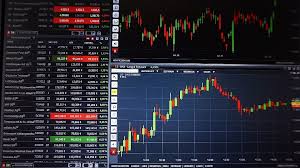
Unlocking the World of Forex Trading Strategies
In the fast-paced environment of forex trading, having a well-defined strategy is crucial for success. Whether you are a beginner or a seasoned trader, understanding different forex trading strategies can significantly impact your trading results. In this article, we will explore various forex trading strategies that can assist traders in making informed decisions. For more information about brokers and platforms that facilitate forex trading, check out forex trading strategies pdf Trading Brokers in Morocco.
What is Forex Trading?
Forex trading, or foreign exchange trading, involves the exchange of one currency for another with the aim of making a profit from fluctuations in currency values. The forex market is the largest and most liquid financial market in the world, with an average daily trading volume exceeding $6 trillion. Traders engage in both buying and selling of currency pairs, which are quoted against one another, such as EUR/USD or GBP/JPY.
Importance of Trading Strategies
Forex trading strategies play a vital role in a trader’s success. A good strategy provides a framework for making logical and informed trading decisions, minimizing emotional trading and impulsive behaviors. Effective trading strategies take into account various factors, such as market trends, price action, and economic indicators. Understanding these factors will enable traders to capitalize on market movements and improve their profitability.
Types of Forex Trading Strategies
There are several different types of forex trading strategies that traders can use, tailored to their trading style, risk tolerance, and market conditions. Below are some common strategies:
1. Scalping
Scalping is a short-term trading strategy that involves making small profits from minor price changes. Scalpers typically hold positions for a few seconds to a few minutes, making dozens or even hundreds of trades in a single day. This strategy requires a strict exit strategy and a high degree of discipline.
2. Day Trading
Day trading involves buying and selling currencies within the same trading day. Day traders seek to profit from short-term market movements and typically do not hold positions overnight to avoid any overnight risk. This strategy requires a good understanding of market indicators and the ability to react quickly to market changes.
3. Swing Trading
Swing trading is a medium-term strategy where traders aim to capture price swings over a period of several days or weeks. Swing traders use technical analysis and chart patterns to identify entry and exit points. This strategy is suitable for traders who cannot devote their entire day to trading but still want to be actively involved.
4. Position Trading
Position trading is a long-term strategy employed by traders who believe in the long-term value of a currency pair. Position traders can hold positions for several weeks, months, or even years, depending on their analysis of market fundamentals. This strategy requires patience, as it often involves analyzing macroeconomic factors that affect currency values.
5. News Trading

News trading takes advantage of volatility caused by major economic events and news releases. Traders who use this strategy closely monitor economic calendars and are prepared to enter positions quickly in response to news that can impact the forex market. This strategy requires a comprehensive understanding of global economic factors and events.
Risk Management in Forex Trading
Regardless of the strategy employed, effective risk management is essential in forex trading. Traders should define their risk tolerance, set stop-loss orders, and avoid risking more than a small percentage of their trading capital on a single trade. By managing risk, traders can protect their accounts from significant losses and increase their potential for long-term profitability.
Creating Your Forex Trading Strategy PDF
To develop a personal trading strategy, traders can create a detailed Forex Trading Strategies PDF. This document should outline the chosen strategy, rules for entry and exit, risk management practices, and plans for regular evaluation and adjustment. Here are some key components to include in your PDF:
1. Objectives
Clearly define your trading objectives, whether it’s to generate supplementary income or to achieve financial independence. Setting tangible and realistic goals will provide direction to your trading efforts.
2. Strategy Description
Detail the specific trading strategy you intend to use, including the indicators, chart patterns, and time frames you’re focusing on.
3. Trading Plan
Document the rules for entering and exiting trades, including criteria for placing trades and specific conditions under which to close a position.
4. Risk Management Rules
Specify your approach to risk management, such as setting stop-loss orders and defining the maximum percentage of your capital you are willing to risk per trade.
5. Performance Evaluation
Establish a method for regularly reviewing your trading performance, assessing what works and what doesn’t, and adjusting your strategy accordingly.
Conclusion
Forex trading strategies are essential for any trader looking to succeed in the forex market. By understanding different strategies, implementing effective risk management practices, and creating a personalized trading plan, you can enhance your trading performance. Remember, no strategy guarantees success, but a well-structured approach can increase your chances of making profitable trades. Always stay informed about market developments, pursue continuous education, and adapt your strategy as necessary to meet changing market conditions.
Embrace the challenge of forex trading with a solid foundation of knowledge and a reliable set of strategies at your disposal. Happy trading!

